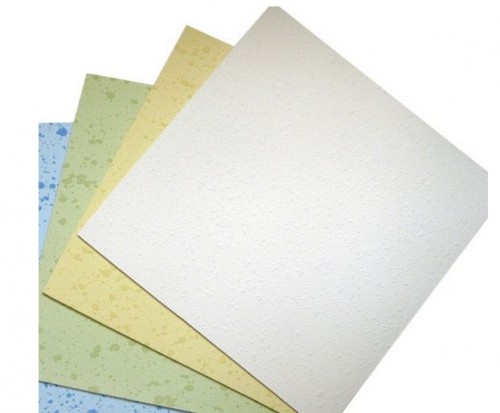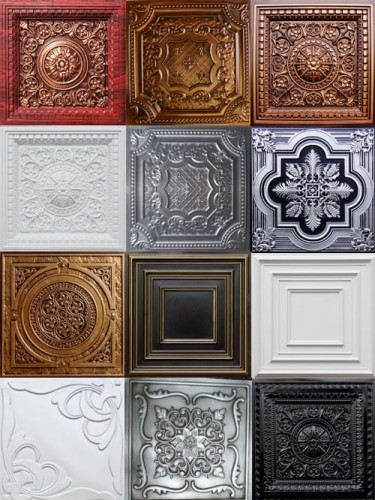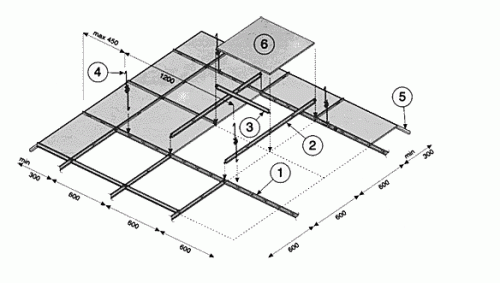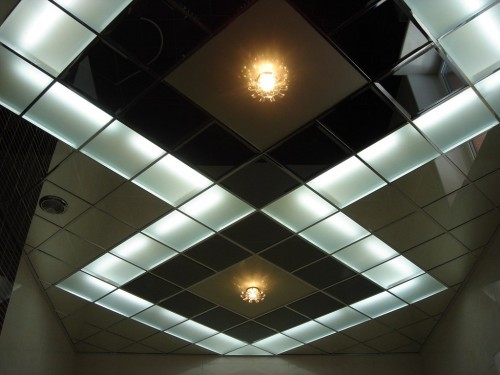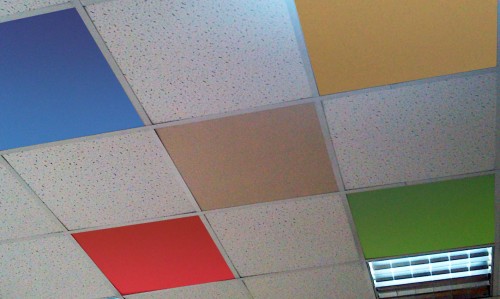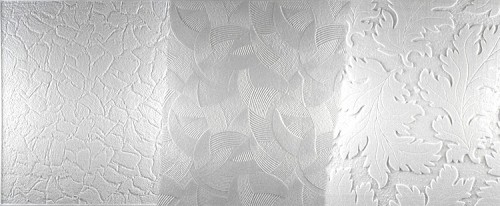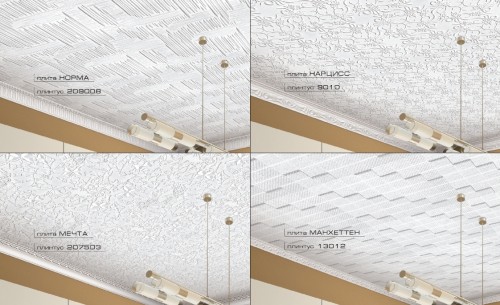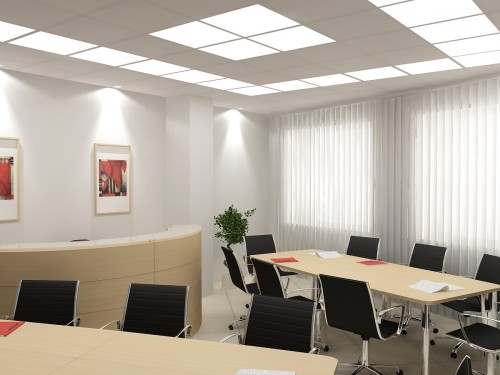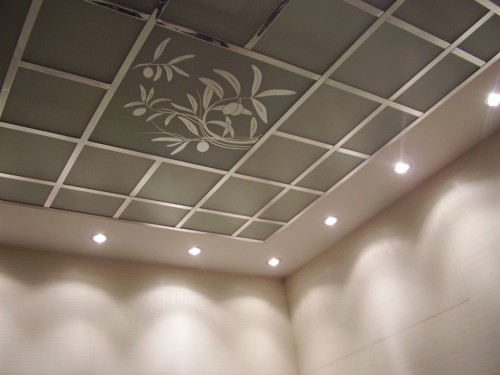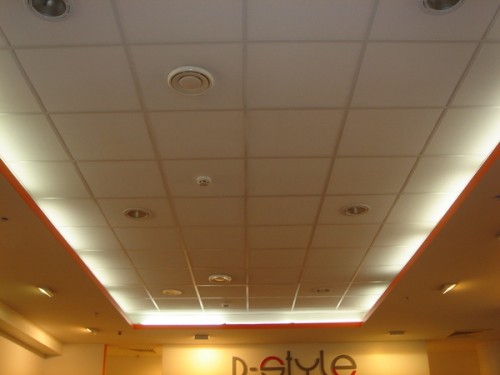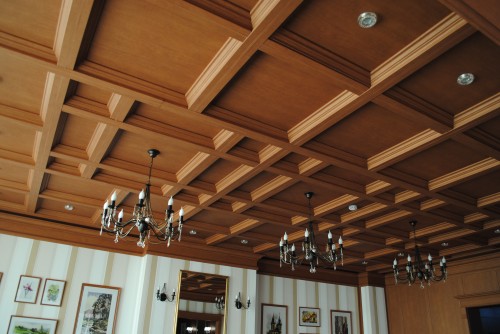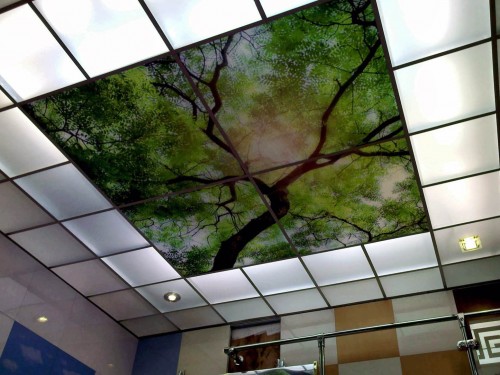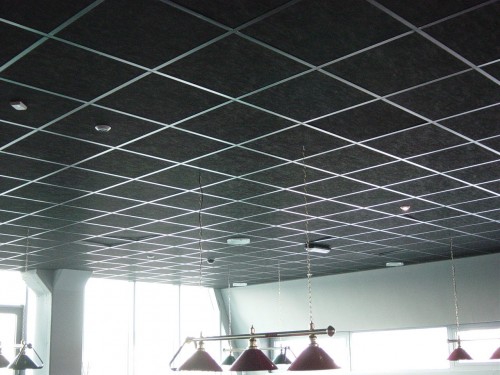
Tile ceilings Ceilings
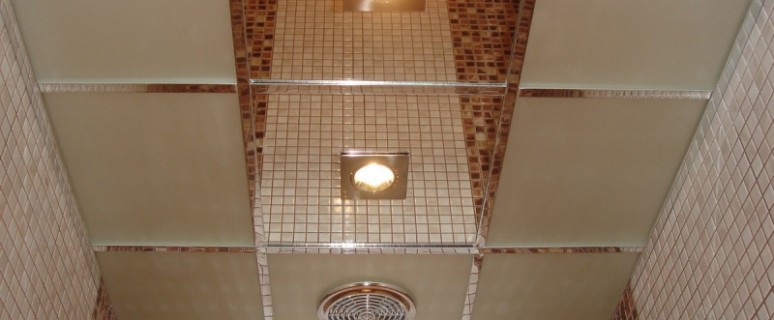
This design was widespread in modern interiors - tiled ceilings are used in offices and public places, used in the decoration of residential premises. The verified geometry of forms, as well as decorative decorations, make such ceilings are quite popular, and the functional advantages of materials will ensure reliable operation.
Content
Varieties of tiled ceilings
Ceiling plates are glossy, matte, as well as mirrored. The last option will fit into the interior of non-residential, office and public premises, the matte ceilings can be used in bedrooms.
The functional feature is distinguished by the following types of ceilings:
- hygienic - they are used in kindergartens and medical institutions. Such ceilings are covered with vinyl film, they can be washed with a stream of high pressure water;
- acoustic - from the material of the loose structure (fiberglass) or with microperphoration. Perfectly absorb the sound indoors and isolate from third-party noise;
- moisture-resistant - withstand the humidity of the room 100%, apply for bathrooms, pools.
Plates can be carved, made in the form of a frame with a stained glass window, gaining from individual plates. Wooden perforated plates look unusually and have good noise absorbing properties.
As an alternative to a smooth surface of tile suspended ceilings, reliefs can be used. With the help of wooden and drywall plates, the caissional relief of the ceiling is performed (with decorative recesses and curly cells). Cesson ceilings can be a kind of highlight of the interior and give respect to the room. There are also configurations of ceilings with convex plates and a "recessed" suspended system (microluk or tugular).
Tile materials and their characteristics
As materials for ceiling plates use:
- polystyrene foam
- reinforced plaster, drywall;
- mineral fiber;
- fiberglass;
- metal, plastic, mirror, tree.
The material of the suspended ceiling tiles must be chosen on the basis of the functional requirements for it and the conditions of the room. Depending on the composition, the ceiling plates have the following characteristics:
- Plates made of polystyrene - are produced diverse embossing and drawings, provide excellent heat and noise insulation indicators, differ in the available price. The tile ceiling of polystyrene is easily mounted, and the additional finish in the form of imitation of stucco or thread will give it a decorative look. These ceiling plates can be painted with water-based paint in any shades. Laminated polystyrene is characterized by increased moisture resistance, due to which it can be used in rooms with high humidity. From the disadvantages it should be noted that non-aluminized plates from this material poorly carry dampness, in addition, under the influence of heating, the polystyrene foam can melt.
- Plasterboard plates - inexpensive and popular material for creating a smooth, perfectly smooth surface, convenient for processing. Such a tile is easily cut manually and stacked on a metal or wooden frame. This material is characterized by environmental friendliness, creates a good sound insulation, fireproof. The disadvantage of plasterboard is its high moisture permeability - under the action of water and steam plates lose strength, deforming, so for bathrooms and kitchens it is recommended to use specially treated plasterboard.
- Ceiling plates made of solid mineral fiber with the addition of cellulose are distinguished by durability, but dents may appear on them. The compressed glass gamble is softer to the touch, but such plates are less exposed to deformation and will not break when transport. For ceilings made of mineral fiber as additives use the secondary recycled paper, cellulose, clay. The glass-grained and mineral fiber plates are distinguished by environmental friendliness, good heat and noise insulation, they are not exposed to "biological attacks" of mold and fungi. Due to its moisture resistance, such ceilings are not deformed and suitable for premises with high humidity.
- Metal plates - durable and wear-resistant material. They are made of aluminum and stainless steel, produced in matte and glossy versions, with powder spraying, mirrored coatings. Perforated, as well as cellular and corrugated ceilings look perfectly in the spacious halls of supermarkets, train stations. They are installed where it is necessary to get high-quality ventilation and sound absorption.
- Wooden tiles for the ceiling - are performed from solid wood of different breeds, as well as from MDF or chipboard - with veneer coating, from plywood with laminating film.
Suspended tiled ceilings
Suspended Tile Ceiling Device
These ceilings are a modular design that you need to assemble from individual items during installation. Guide profiles are fastened in the form of a rigid frame, in which the elements form the ceiling plane - ceiling tiles of a square or rectangular shape. This design is framed by edging around the perimeter and is attached using suspensions to the base ceiling of the room.
Features of choice and installation
Tiled suspended ceilings "Armstrong" are widely known - they are manufactured by the same name (Armstrong). This company accounts for the lion's share of sales of tiled ceilings in our country. There are also other foreign manufacturers in the United States and Europe with branches in many countries of the world. The second scale by the manufacturer is the American company Celotex, then the German campaign of the USG Donn, as well as the Swedish Ecophon and Finnish Akusto (both as part of the Saint-G0bein concern). Accordingly, the price, as a rule, depends on the material, quality and purpose of products. When buying, check for the hygienic certificate on this product.
For high-quality and accurate docking of the tiled ceiling, it is recommended to buy all the details from one manufacturer. With the help of the ceiling tiles, it is possible to make not only smooth horizontal, but also multi-level structures with smooth transitions between levels, with different lighting options. Suspended ceilings help adjust the height of the room, give the ceiling various forms (inclined, vaulted, in the form of the arch).
Due to the design features, you can collect a suspended ceiling of several types of material - for example, a matte combined with mirrors, place blocks of several colors.
The tile will give the ceiling a finished view, serve as a support for the lamps, reliably disguises in the interporal space, the wiring and additional communications (air conditioning and ventilation systems, fire-fighting sensors). If necessary, it is easy to disassemble any structural elements and access the necessary equipment. Repair and dismantling are carried out using a ladder - the desired plates are easy to get and replace if necessary.
Tile seamless ceilings
As an alternative to modular structures, equipped with a frame, seamless tile ceilings appeared. The tiles for them are released both with even and with wavy edges - while the shape and relief are selected in such a way as to make invisible transitions, and the surface is as homogeneous as possible.
In such a ceiling, it is almost impossible to distinguish between individual components. With the help of a seamless tile coating, you can disguise small irregularities of the ceiling surface - for alignment, when installing in some places, the material is glued into several layers (in such cases it is better to use a tile without a special relief).
Designer ceilings of a variety of shapes, reliefs and colors can be written in almost any interior, pick up the door and plinths.
Due to the convenience of mounting, as well as a wide choice of material on sale, tile ceilings are affordable and reliable, as well as easy to use the finishing option.
Tile ceilings - Photo:





